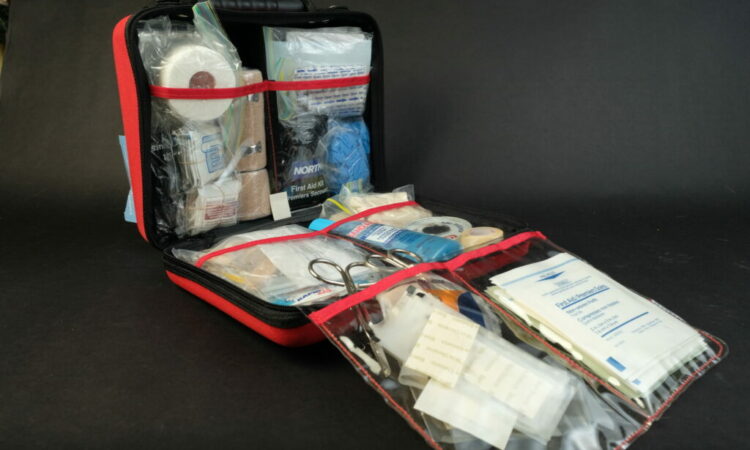While there are no American or Canadian trucking regulations that require drivers to carry a First Aid kit on the truck, it’s hard to argue against the idea. They are inexpensive and can be invaluable if you ever need one.
You can pick up First Aid kits at almost any automotive store or safety supply shop. Some are task-specific, for settings like restaurants or construction sites. Mobile kits are available, too.
But beware that less-expensive kits might be missing some useful extras, or be loaded with bandages and gauze just to make the kit look full. Start with a good basic kit and add what you think you might need.
1. Adhesive bandages
Otherwise known as “Band-Aids.” Keep a variety of sizes including a few “butterfly” bandages. They are used to hold two sides of a wound together, and are almost as good as stitches.
2. Sterile gauze pads and cloth tape
Useful for stopping bleeding or covering larger wounds. They are available in different sizes, include half a dozen of each. They can be used with antibacterial ointment.
3. Antiseptic wipes and wash
Useful for cleaning dirt out of open wounds and preventing infection. Wipe your hand with the antiseptic before touching a fresh wound. Some brands contain pain relievers too.
4. Antibiotic ointment
These can help curb bacteria growth and prevent infection. Apply directly to the wound or to the bandage.
5. Elastic bandages
Sometimes called ACE bandages, these are made of stretchy fabric with metal clasps or Velcro to hold everything firm. They’re used for wrapping injuries to reduce swelling, or to hold cold packs in place.
6. Disposable gloves
Gloves protect the patient and the caregiver from direct contact, preventing the possible spread of infection. Because of allergies to latex, the gloves should be made of nitrile or neoprene.
7. Instant cold packs
These are sealed envelopes with a substance inside that turns cold when activated. Useful for reducing swelling and easing the sting or itch from insect bites.
8. Scissors
Look for a pair of curved medical scissors. They tend to be sharper and easier to use than typical sewing or paper scissors. They cost a little more but are worth it.
9. Tweezers
Look for a quality pair made from surgical steel with a needle-nose tip. Useful for extracting broken glass from a wound as well as thorns, insect stingers, and ticks.
10. First Aid handbook
A pocket-sized handbook will provide guidance on basic First Aid. Even if you haven’t taken a First Aid course, these will guide you through common situations.
The Canadian Red Cross offers a free smartphone app that downloads an illustrated guide and several short how-to videos directly to the device — so a connection isn’t necessary to watch them. The Canadian Red Cross also offers fully stocked First Aid kits for cars and trucks.
11. Survival blanket
Usually made of mylar, survival blankets reflect body heat. Useful for keeping patients warm and they add little bulk to the kit.
12. Sting and bite treatments
To ease the pain and itching from bites and poison ivy or poison oak, pack calamine lotion or hydrocortisone cream, ointment, or lotion. If you have any specific allergies to bee stings, for example, include an Epi-Pen in your kit. These are available by prescription in Canada. Dosage can vary by body mass. And they have an expiration date, so stay on top of that.
13. Altoids tin survival kit
Apparently, this is a thing. There are dozens of YouTube videos illustrating useful bits that can be packed into one of those ubiquitous little candy tins. We found some interesting suggestions among the videos. Others were a bit silly.
Of course there’s much more a First Aid kit should include, such as flash lights, a head-worn “miner’s light,” a sharp knife, a charged cell phone charger-battery, cord, and spare blankets.


